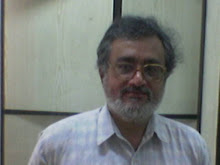What, exactly, is a Hindu Rashtra?
Prafull Goradia
The outcome of the election in Gujarat is likely to evoke a question as to what could be a Hindu Rashtra. The Narendra Modi-led victory is the first assertion of Hindu nationalism. One of its aspirations would be the founding of a Rashtra, or state, after its heart. What could be its character?
Unlike in Islam, the state is not woven as a weft to the warp of religion in the cloth of Hindu life. There is no imam in Hinduism. The question, therefore, of whether he and the sultan should be one or different individuals does not arise. What then would be a Hindu Rashtra?
The only self-declared Hindu state in modern India was the principality of Travancore. A Japanese scholar, Koji Kawashima, in his book Missionaries and a Hindu State (OUP, 1998) has researched the experience of Travancore between 1858 and 1936. To quote from the book: 'In India, the kingly duties have been called rajadharma, which can be defined as the obligation of the ruler to protect dharma, or to secure peace, prosperity, justice and order in the kingdom. Of these duties, the protection of the gods and their temples was perhaps the most important. As a servant of Sri Padmanabha, the Maharaja of Travancore observed a number of rituals...Travancore was a state which had a large number of non-Hindus, particularly Syrian Christians. In 1875, Christians formed about 20 per cent of the total population, and Muslims six per cent. These different religions have co-existed in Travancore state. One of the principal reasons for this co-existence was a semi-official state policy of religious tolerance'. Evidently, then, the Hindu state of Travancore did not discriminate against those of other faiths. Today, 20 per cent of Keralites are Christian and a similar percentage is Muslim.
Nepal is a self-declared Hindu kingdom. It is in fact the world's only Hindu country. Part I of its constitution adopted in 1990, describes the kingdom as a multi-ethnic, multi-lingual, democratic, independent, indivisible, sovereign Hindu and constitutional monarchical kingdom. Part III makes the right to equality for all its citizens a fundamental right.
To quote M. Mohsin, a professor based in Nepal: 'Religion has never been a barrier of effective communication between different ethnic groups in Nepal. All though her long history Nepalese society has displayed a remarkably high degree of religious harmony.' There is, however, no mention of a minority or a majority in the Nepalese constitution. Nor is any section of the citizenry given any special treatment. All were not only declared equal before the law but were also treated on the same plane.
The practice of the Indian constitution has, however, been discriminatory. There are any number of special provisions for those citizens who are termed 'minorities'. Apart from the discrimination they represent, they also keep aflame the bogey of minorityism which in turn must provoke resentment among Hindus. Articles 29 and 30 give so many special concessions to minority educational institutions. There is a separate personal law for the Muslims. The Muslim Women's Bill, 1987, was specially passed to overturn a judgement by the Supreme Court in the Shah Bano case for alimony. The Minorities Commissions are another example of discrimination, as also the existence of wakfs. Not all of the latter are charitable organisations. Many are called wakf-e-aulad, or those meant for the benefit of the donors' progeny. The Haj subsidy is yet another example of this.
A Hindu Rashtra is unlikely to accept such discrimination between one set of citizens and another. All would be equal and be treated as equal.
(The writer is a former editor of BJP Today) Courtesy The India Express - Friday, December 20, 2002

No comments:
Post a Comment